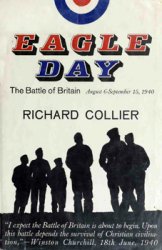A number of new centers emerged in western Asia and the eastern Mediterranean in the centuries after 1000 B. c.E. The most powerful and successful was the Neo-Assyrian Empire (911-612 B. C.E.). Compared to the flat expanse of Babylonia to the south, the Assyrian homeland in northern Mesopotamia is hillier and has a more temperate climate and greater rainfall.
Peasant farmers, accustomed to defending themselves against raiders from the mountains to the east and north and the arid plain to the west, provided the foot-soldiers for the revival of Assyrian power. The rulers of the Neo-Assyrian Empire led a ceaseless series of campaigns: westward across the plain and desert as far as the Mediterranean, north into mountainous Urartu (ur-RAHR-too) (modern Armenia), east across the Zagros range onto the Iranian Plateau,

© Cengage Learning
The Assyrian Empire From the tenth to the seventh century b. c.e. the Assyrians of northern Mesopotamia created the largest empire the world had yet seen, extending from the Iranian Plateau to the eastern shore of the Mediterranean and containing a diverse array of peoples.
And south along the Tigris River to Babylonia. These campaigns provided immediate booty and the prospect of tribute and taxes. They also secured access to vital resources such as iron and silver and gave the Assyrians control of international commerce. Driven by pride, greed, and religious conviction, the Assyrians defeated all the great kingdoms of the day. At its peak their empire stretched from Anatolia, Syria-Palestine, and Egypt in the west, across Armenia and Mesopotamia, and as far as western Iran. The Assyrians created a new kind of empire, larger in extent than anything seen before (see Map 4.3) and dedicated to the enrichment of the imperial center at the expense of the subjugated periphery.
God and King
The king was literally and symbolically the center of the Assyrian universe. All the land belonged to him, and all the people, even the highest-ranking officials, were his servants. Assyrians believed that the gods chose the king as their earthly representative. Normally the king selected one of his sons to succeed him, a choice confirmed by divine oracles and the Assyrian elite. In the revered ancient city of Ashur the high priest anointed the new king's head with oil and gave him the insignia of kingship: a crown and scepter. The kings also were buried in Ashur.
Messengers and spies brought the king information from every corner of the empire. The king appointed officials, heard complaints, dictated correspondence to an army of scribes, and received foreign envoys. He was the military leader, responsible for planning campaigns, and was often away from the capital commanding operations in the field.
Religion and Propaganda
The king devoted much of his time to supervising the state religion, attending elaborate public and private rituals, and overseeing the upkeep of the temples. He made no decisions of state without consulting the gods through rituals of divination. All actions were carried out in the name of Ashur, the chief god. Military victories were cited as proof of Ashur's superiority over the gods of the conquered peoples.
Relentless government propaganda secured popular support for military campaigns that mostly benefited the king and the nobility. Royal inscriptions posted throughout the empire catalogued recent victories, extolled the unshakeable determination of the king, and promised ruthless punishments to anyone who resisted. Relief sculptures depicting hunts, battles, sieges, executions, and deportations covered the walls of the royal palaces. Looming over most scenes was the king, larger than anyone else, muscular and fierce. Few visitors to the Assyrian court could fail to be awed—and intimidated.
Conquest and Control
Military Might and Terror Tactics
Superior military organization and technology lay behind Assyria's unprecedented conquests. Early armies consisted of men who served in return for grants of land and peasants and slaves contributed by large landowners. Later, King Tiglathpileser (TIG-lath-pih-LEE-zuhr) (r. 744-727 B. c.E.) created a core army of professional soldiers made up of Assyrians and the most formidable subject peoples. At its peak the Assyrian state could mobilize a half-million troops, including

The Mediterranean and Middle East, 2000-500 b. c.e.

Wall Relief from the Palace of Sennacherib at Nineveh Against a backdrop of wooded hills representing the landscape of Assyria, workers are hauling a huge stone sculpture from the riverbank to the palace under the watchful eyes of officials and soldiers. They accomplish this task with simple equipment—a lever, a sledge, and thick ropes—and a lot of human muscle power.
Mass deportation The forcible removal and relocation of large numbers of people or entire populations. The mass deportations practiced by the Assyrian and Persian Empires were meant as a terrifying warning of the consequences of rebellion. They also brought skilled and unskilled labor to the imperial center.
Administration and Exploitation
Ie PRIMARY SOURCE: An Assyrian Emperor's Resume: Ferocious Conquests a Specialty Read the inscription left behind by Ashur-nasirpal, in which he promotes himself as an especially effective—and brutal—military leader.
Light-armed bowmen and slingers who launched stone projectiles, armored spearmen, cavalry equipped with bows or spears, and four-man chariots.
Iron weapons gave Assyrian soldiers an advantage over many opponents, and cavalry provided speed and mobility. Assyrian engineers developed machinery and tactics for besieging fortified towns. They dug tunnels under the walls, built mobile towers for archers, and applied battering rams to weak points. Couriers and signal fires provided long-distance communication, while a network of spies gathered intelligence.
The Assyrians used terror tactics to discourage resistance and rebellion, inflicting harsh punishments and publicizing their brutality: civilians were thrown into fires, prisoners were skinned alive, and the severed heads of defeated rulers hung on city walls. Mass deportation— the forced uprooting of entire communities and resettlement elsewhere—broke the spirit of rebellious peoples. Although this tactic had a long history in the ancient Middle East, the NeoAssyrian monarchs used it on an unprecedented scale, and up to 4 million people may have been relocated. Deportation also shifted human resources from the periphery to the center, where the deportees worked on royal and noble estates, opened new lands for agriculture, and built palaces and cities.
The Assyrians never discovered an effective method of governing an empire of such vast distances, varied landscapes, and diverse peoples. Control tended to be tight at the center and in lands closest to the core area, and less so farther away. The Assyrian kings waged many campaigns to reinstate control over territories subdued in previous wars. Provincial officials oversaw the collection of tribute and taxes, maintained law and order, raised troops, undertook public works, and provisioned armies and administrators passing through their territory. Provincial governors were subject to frequent inspections by royal overseers.
The Assyrians ruthlessly exploited the wealth and resources of their subjects. Military campaigns and administration were funded by plunder and tribute. Wealth from the periphery was funneled to the center, where the king and nobility grew rich. Triumphant kings expanded the ancestral capital and religious center at Ashur and built magnificent new royal cities encircled by high walls and containing ornate palaces and temples. Dur Sharrukin (DOOR SHAH-roo-
Keen), the “Fortress of Sargon,” was completed in a mere ten years by a massive labor force composed of prisoners of war and Assyrian citizens who owed periodic service to the state.
Nevertheless, the Assyrian Empire was not simply parasitic. There is some evidence of royal investment in provincial infrastructure. The cities and merchant classes thrived on expanded long-distance commerce, and some subject populations were surprisingly loyal to their Assyrian rulers.
Assyrian Society and Culture
Elite and Common People
Library of Ashurbanipal
A large collection of writings drawn from the ancient literary, religious, and scientific traditions of Mesopotamia.
It was assembled by the seventh-century b. c.e. Assyrian ruler Ashurba-nipal. The many tablets unearthed by archaeologists constitute one of the most important sources of present-day knowledge of the long literary tradition of Mesopotamia.
Scholarship
The elite class was bound to the monarch by oaths of obedience, fear of punishment, and the expectation of rewards, such as land grants or shares of booty and taxes. Skilled professionals— priests, diviners, scribes, doctors, and artisans—were similarly bound.
Surviving sources primarily shed light on the deeds of kings and elites. Only a little is known about the lives and activities of the millions of Assyrian subjects. The government did not distinguish between native Assyrians and the increasingly large number of immigrants and deportees in the Assyrian homeland. All were referred to as “human beings,” entitled to the same legal protections and liable for the same labor and military service. Over time the inflow of outsiders changed the ethnic makeup of the core area.
The vast majority of subjects worked on the land. The agricultural surpluses they produced allowed substantial numbers of people—the standing army, government officials, religious experts, merchants, artisans, and other professionals in the towns and cities—to engage in specialized activities.
Individual artisans and small workshops in the towns manufactured pottery, tools, and clothing, and most trade took place at the local level. The state fostered long-distance trade, since imported luxury goods—metals, fine textiles, dyes, gems, and ivory—brought in substantial customs revenues and found their way to the royal family and elite classes. Silver was the basic medium of exchange, weighed out for each transaction in a time before the invention of coins.
Assyrian scholars preserved and built on the achievements of their Mesopotamian predecessors. When archaeologists excavated the palace of Ashurbanipal (ah-shur-BAH-nee-pahl) (r. 668-627 B. c.E.), one of the last Assyrian kings, at Nineveh (NIN-uh-vuh), they discovered more than twenty-five thousand tablets or fragments. The Library of Ashurbanipal contained official documents as well as literary and scientific texts. Some were originals that had been brought to the capital; others were copies made at the king's request. The “House of Knowledge” referred to in some documents may have been an academy that attracted learned men to the imperial center. Much of what we know about Mesopotamian art, literature, science, and earlier history comes from discoveries at Assyrian sites.
SECTION REVIEW
• Tough farmers in northern Mesopotamia provided the foot-soldiers for the rise of the Neo-Assyrian Empire, which dominated western Asia from the late tenth to seventh centuries b. c.e.
• Ceaseless campaigns of conquest brought booty, tribute and taxes, and control of international commerce and valuable resources.
• The all-powerful Assyrian king, claiming the support of the god Ashur, was at the center of government and the state religion.
• The Assyrians employed military might, propaganda, and state terrorism to intimidate their subjects, but they never developed an effective system of political control and frequently had to reconquer territory.
• The Assyrians ruthlessly funneled the wealth and resources of their subjects to the center, where the king and nobility grew rich. Frequent mass deportations provided manpower to build royal cities and work the lands of the elite.
• Assyrian scholars preserved and added to the long intellectual and scientific legacy of Mesopotamian civilization.




 World History
World History









